mobile View, to the German Version tap the flag


- Principality of Andorra
- titular principality with a parliamentaric form of government
- former fiefdom-state of the Bishop of Urgel (Spain) and the President of France
- own names: Principauté d' Andorre (Fr.), Principado de Andorra (Sp.)
• Flag
• Historical Flags
• Meaning/Origin of the Flag
• Coat of Arms
• Meaning/Origin of the Coat of Arms
• Map
• Numbers and Facts
• History
• Origin of the Country's Name
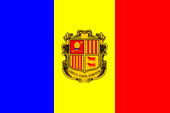
National flag,
ratio = 2:3,
Source, by:
Flags of the World,
Wikipedia (D),
Flaggen Enzyklopädie






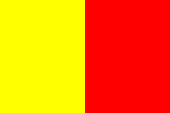
1806–1866,
National flag,
Source, by: Flags of the World,
Wikipedia (D)



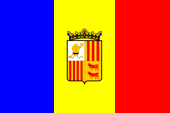
1866–1993,
National flag,
Source, by: Flaggen und Wappen




The flag of Andorra was raised for the first time in today's pattern in ratio of 8:9:8– three vertical stripes in blue, yellow and red, with the coat of arms in the yellow stripe – in 1866. It was allegedly designed by Emperor Napoleon III. The flag joins blue and red, two colours of the French Tricolour, and yellow and red, the Spanish colours. The style of this flag is such as to better express the French influence on the country. In any case did this Tricolour replace Andorra's flag from 1806, which had shown the traditional colours of the country, yellow and red vertically. These are the colours of the Counts of Foix and even of the Bishop of Urgel.
Source: Flaggen-Atlas Erde


to 1993,
Coat of arms of Andorra,
Source, by:
Flaggen und Wappen
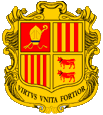
since 1993,
Coat of arms of Andorra,
Source, by:
Corel Draw 4,
Wikipedia (D)

The coat of arms of Andorra is quartered, and shows in the individual fields a miter (Urgel), three red poles (Foix), four red poles (Roussillon), and two cows (Béarn). Several variations of the flag are flown in the country, sometimes with or without the coat of arms. In 1993 a new constitution was adopted, which guarantees Andorra full sovereignty. Prior Andorra was a kind of French-Spanish fiefdom state. In connexion with this it is possible that hitherto the crown above the escutcheon was deleted.
Source: Wikipedia (D),
Flaggen-Atlas Erde,
Volker Preuss

Location:
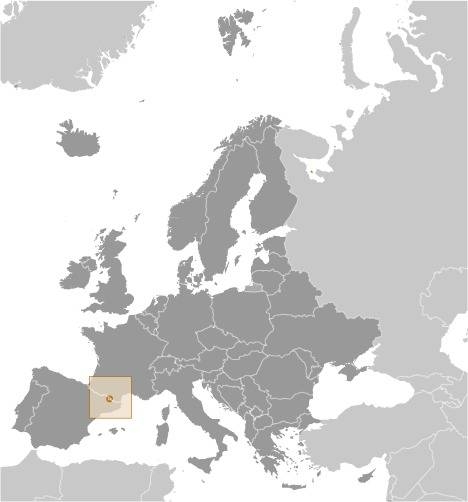
Source: CIA World Factbook
Map of the country:
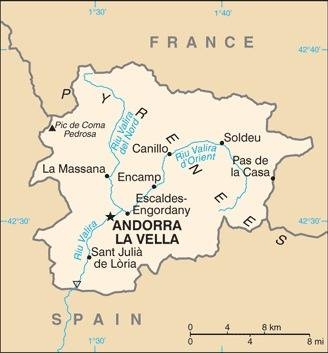
Source: CIA World Factbook

Area: 180 square miles
Inhabitants: 77.000 (2018), thereof Andorran 48.8%, Spanish (Catalans) 25.1%, Portuguese 12%, French 4.4%, other 9.7%
Religions: 89% Roman Catholic, 4% other Christian
Density of Population: 426 inh./sq.mi.
Capital: Andorra la Vella, 23.214 inh. (2019)
official Language: Catalan
other Languages: French, Spanish
Currency: 1 Euro (EUR, €) = 100 Cent
Time Zone: GMT + 1 h
Source: Wikipedia (D),
World Statesmen,
CIA World Factbook

1278 · establishment of the mutual protectorate of the Bishop of Urgel and the Counts of Foix
1993 · new constitution, full sovereignty
Source: Wikipedia (D)

The name "Andorra" was probably given to the area from Navarra, and goes to the Basque word "andurrial" back, what means "bushland".
Source: Handbuch der geographischen Namen


![]()















